Recent Articles
Popular Makes
Body Types
Advanced Safety and Driver Systems Explained
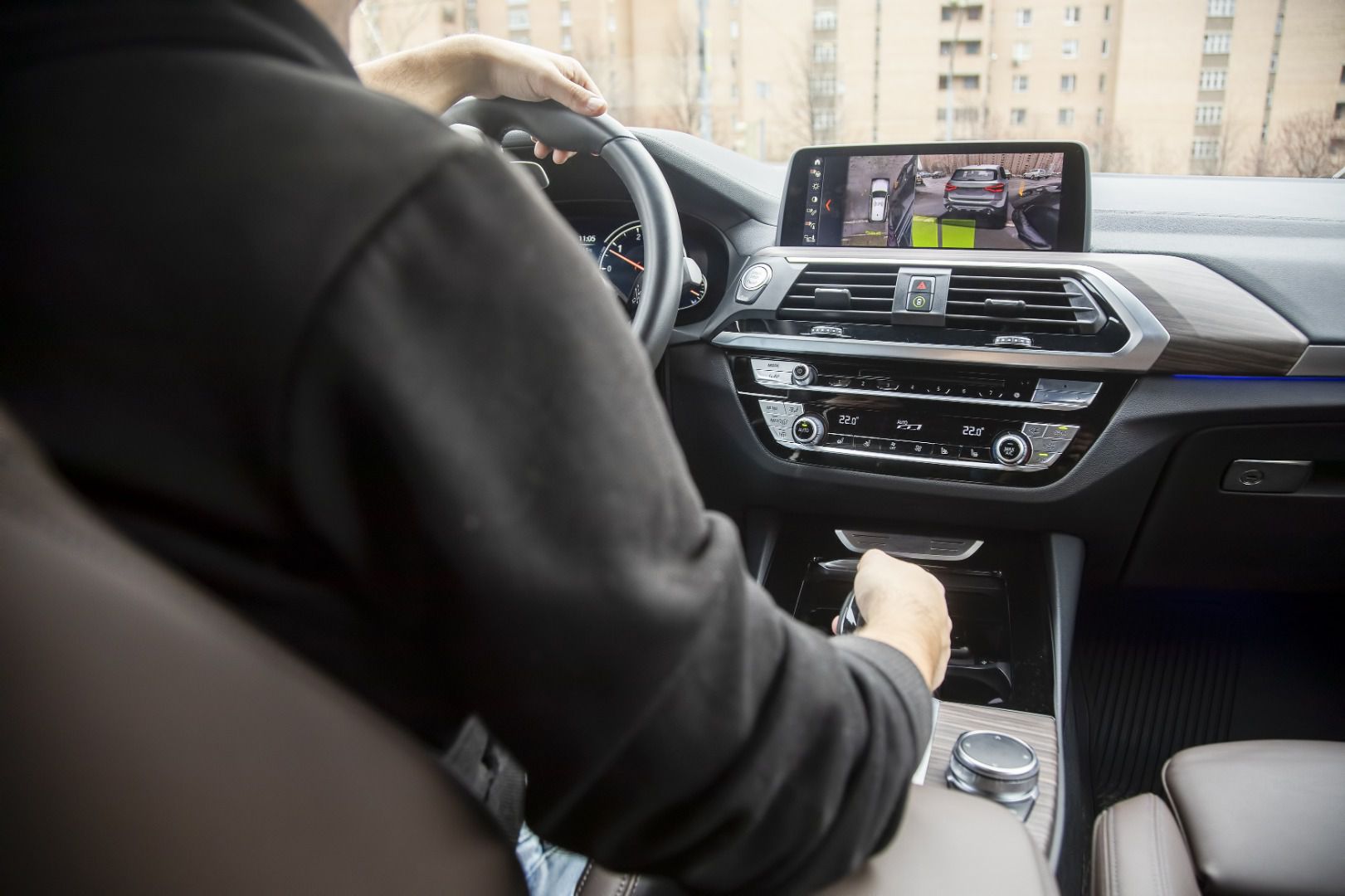
AdobeStock 309670750 ・ Photo by Maria - stock.adobe.com
The last few years have seen great advances in high-technology driver assistance in new cars. Collectively, these features are called ADAS — advanced driver-assistance systems. The term encompasses all the electronics designed to enhance the safety or ease of driving. These features go by different names depending on the brand of vehicle, but they typically perform the same functions.
ADAS features are quickly becoming standard equipment on every automaker’s lineup. That’s partly because of government requirements for features like backup cameras, but it’s also true that consumers want these features to enhance their safety. To familiarize you with the versatility of ADAS, here are 10 representative features you can find on many new cars in 2020.
Adaptive Cruise Control
Adaptive cruise control goes by many names, but the basic functionality is typically the same: The vehicle uses forward-facing radar to keep track of the distance to the vehicle just ahead, and adjusts the cruising speed to maintain a safe following distance. Some adaptive systems operate only down to a minimum speed, usually about 20 to 30 mph. However, many systems can now manage stop-and-go traffic, bringing the vehicle to a complete stop and then starting up again when traffic begins moving.
All adaptive cruise control technology is closely related to collision mitigation braking and automatic emergency braking. That's both rely on the forward-looking radar or other technology to gauge distance from other vehicles or obstacles.
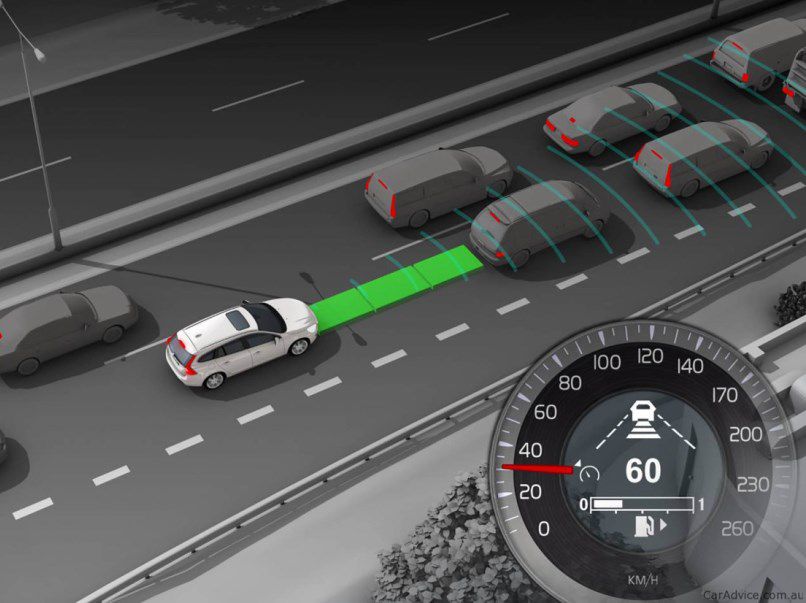
Automatic Emergency Braking with Forward Collision Warning
One of the most common ADAS features to be included as standard equipment is automatic emergency braking, also known as collision mitigation braking. This feature relies on forward-looking radar and sometimes cameras to determine when a collision is imminent. If the system determines that your vehicle is about to hit something, and you have not braked yourself, the vehicle will automatically slam the brakes for you.
Related technology includes a forward collision warning, which alerts the driver to the danger but does not activate the brakes. Other pre-collision safety systems interact with automatic emergency braking, such as features that tighten safety belts and pre-charge brake system pressure when a collision seems imminent.
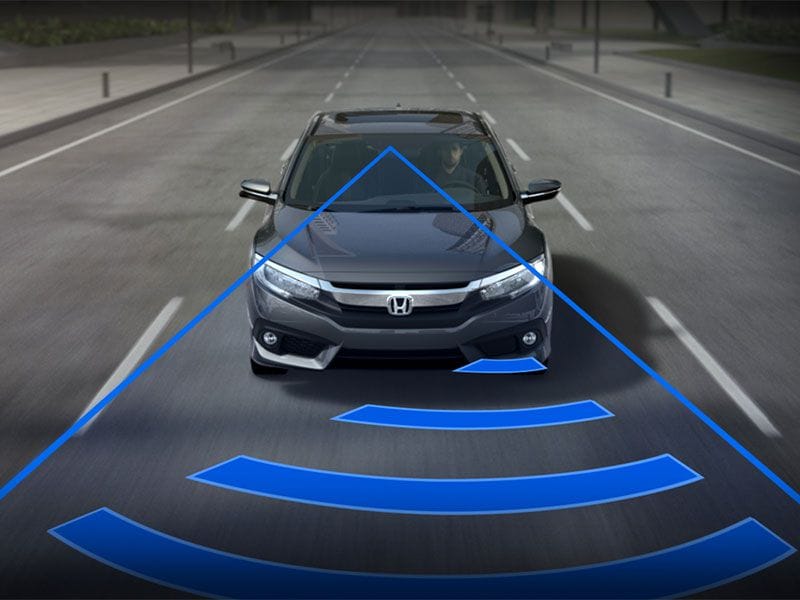
Photo by Honda
Automatic High Beams
Automatic high beam control has been around since the 1950s, but the old systems weren’t very reliable. In the modern era, the feature is becoming increasingly popular. No one likes it when an oncoming driver fails to dim his or her lights, and especially with ultra-bright modern headlights, that can create a dangerous driving situation.
The automatic headlight control system uses the cameras and radar at the front of the car to detect oncoming and leading vehicles, and the ADAS system sends a signal to drop the high beams until the area in front of the vehicle is clear. The very latest in headlight technology is matrix LED headlights that adapt by cutting only the light that might blind an oncoming driver. This technology is still under development and not yet available in America.
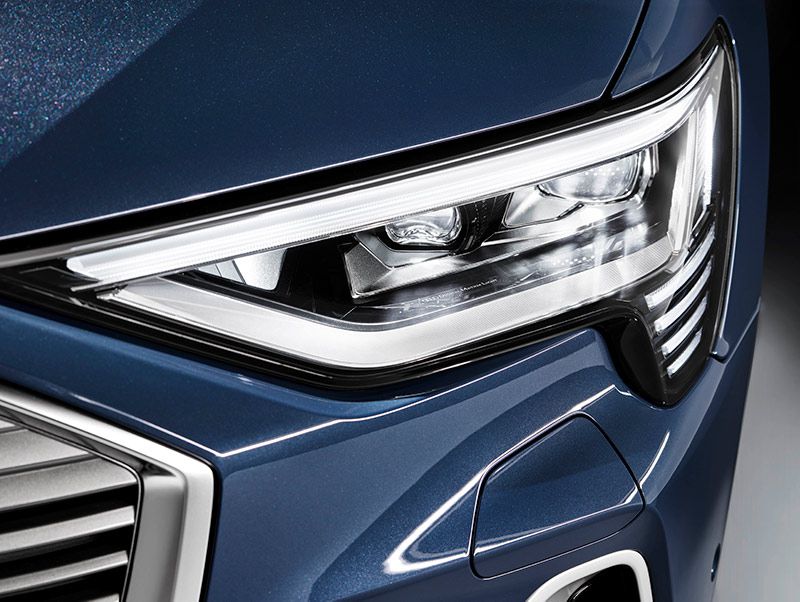
Photo by Audi
Blind-Spot Monitor and Rear Cross-Traffic Alert
Radar systems can also look to the sides and rear of your vehicle. By mounting rearward-looking sensors on the side-view mirrors, they can tell the driver if there’s another vehicle in the blind spots alongside the vehicle. By mounting side-looking radar at the rear of the vehicle, the system can also look out for traffic approaching from the side, such as when backing out of a parking space.
There are many different implementations of blind-spot monitoring — such as Honda’s LaneWatch system, which uses a rear-facing camera on the right side of the vehicle to display an image of the right-hand blind spot on the center display when the right turn signal is actuated. Truck and SUV manufacturers offer extended blind-spot monitoring to include trailers as well as the base vehicle. Blindspot and rear-facing radar can also be used to implement rear-end collision mitigation by noting when a vehicle coming from behind is likely to hit the vehicle, and responding by activating the brakes and tightening seat belts.
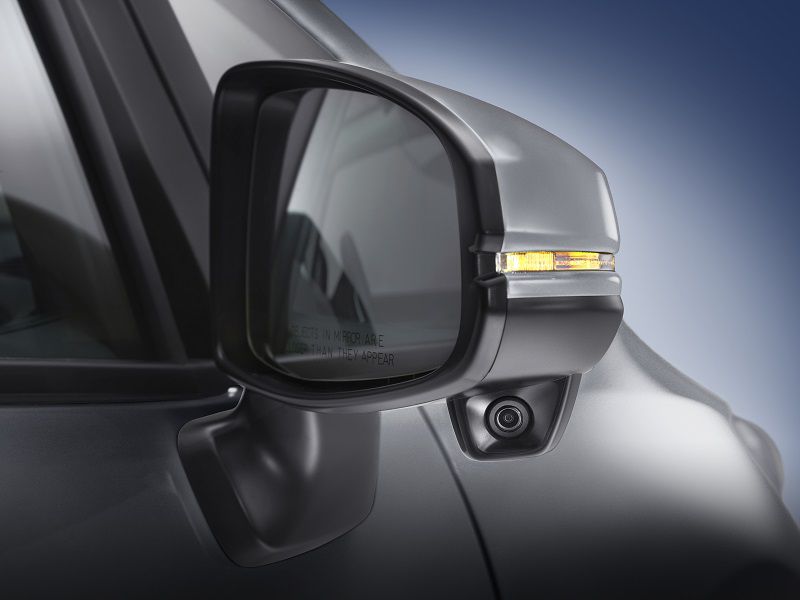
Photo by Honda
Steering Assistance
Among the latest developments in ADAS is assisted steering. This class of technologies includes lane-keeping assistance, lane centering, lane tracing, and limited road following. To implement assisted steering, the vehicle uses its forward-looking cameras to detect the lane designations on the road, usually paint or reflective markers. Some systems also watch the vehicle ahead or interact with the GPS navigation system to determine the likely course of the road.
Lane tracing systems extend basic lane-keeping and centering to keep the vehicle centered in the lane on gentle curves. The most advanced systems, such as Cadillac’s Super Cruise, allow the driver to actually remove his or her hands from the steering wheel when the system is active.
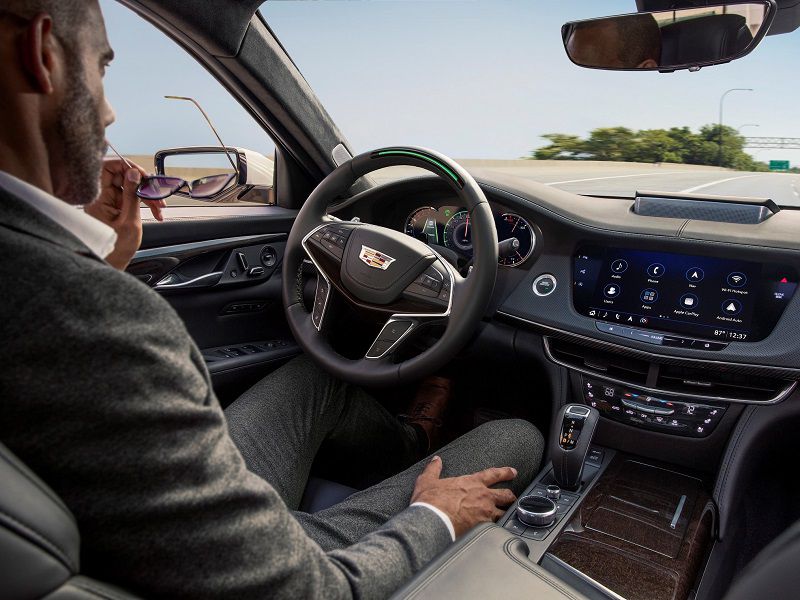
Photo by Cadillac
Head-Up Display
Head-up displays are adapted from military aircraft systems. The display projects driver information such as current speed, navigation instructions, infotainment information, and forward-collision warnings onto the windshield. The images usually appear in the driver’s natural field of vision, helping keep the driver’s eyes on the road instead of looking down at the dashboard.
Some head-up displays have used secondary screens mounted on the dashboard, but those are disappearing in favor of windshield projection. Most HUD displays are now offered in color, but older vehicles may have a basic white-letter display.
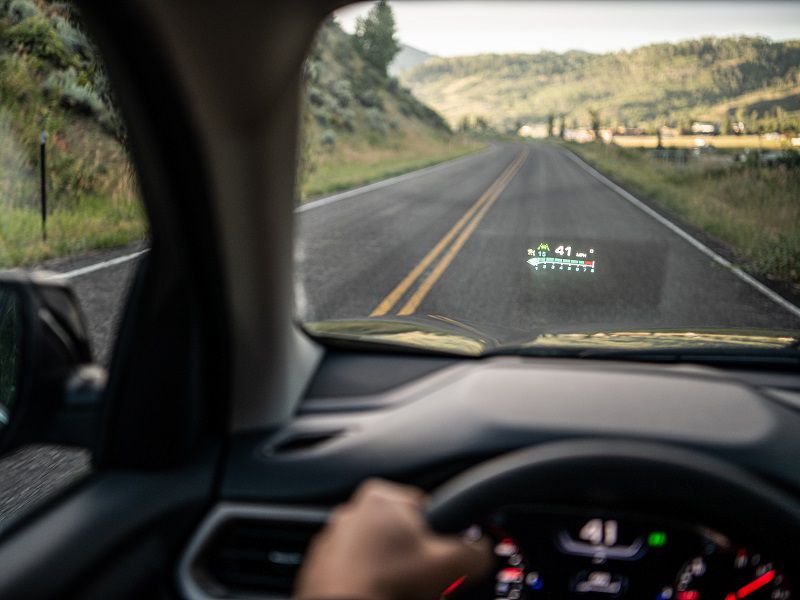
Photo by GMC
Active Parking Assistance
Parallel parking a car is a difficult task for many drivers. Most drivers don’t get a lot of practice at this challenging maneuver, so they don’t do it well. Many premium brands have developed ADAS technology to take the guesswork out of parking. Active parking assist allows the driver to instruct the vehicle to look for parking spaces large enough to accommodate the vehicle.
The system uses cameras and radar to suggest parking spots. The driver confirms the spot and then initiates the parking system. The car handles the steering and motion to place itself neatly in the parking space. Some vehicles will also perpendicularly park themselves in parking lots and then extract themselves as well.
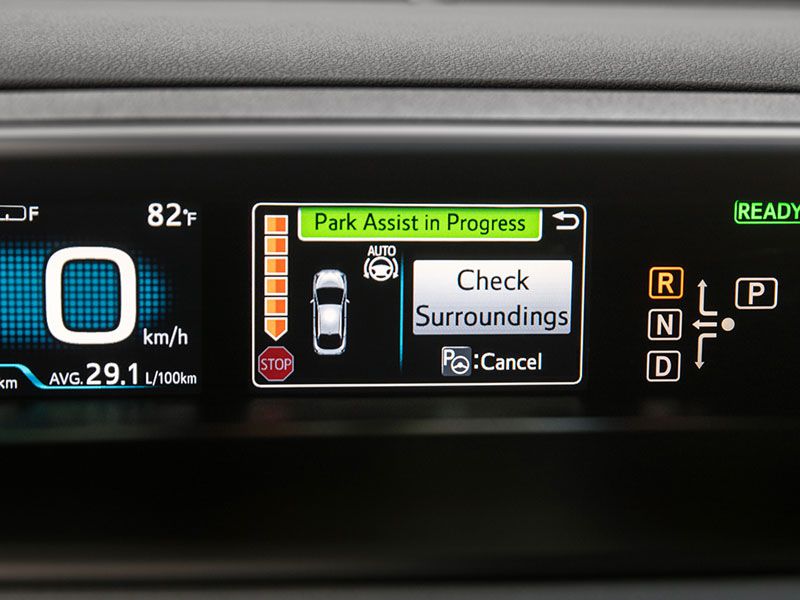
Photo by Toyota
360-Degree Cameras
Another popular ADAS development is the use of 360-degree or bird’s-eye cameras. These cameras integrate images from front, rear, and side-facing cameras to create an overhead image of the vehicle, showing what’s nearby on all sides. The view changes as the driver backs up.
Some of these camera systems also include different views of the bumpers, wheels, and different parts of the vehicle. These multi-camera systems are popular on off-road vehicles and with pickup trucks that are used for towing. new trucks from General Motors brands are available with up to 15 different potential camera views, including the ability to show a rear view that makes a trailer seem invisible when it is equipped with a trailer camera.
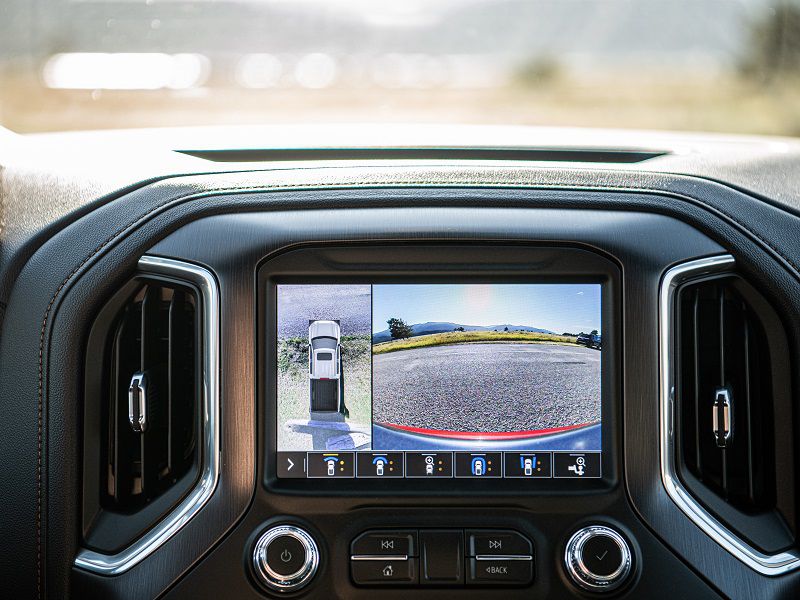
Photo by GMC
Traffic Sign Recognition
One new feature rapidly gaining popularity is traffic sign recognition. This feature uses a forward-facing camera to read standard traffic signs and display relevant information in the head-up display or on the dashboard. The technology is primarily used to inform the driver of the current speed limit, but warning signs and other signs may also be recognized depending on the vehicle.
Many automakers now offer traffic sign recognition technology throughout their product lines. Some automakers such as Mercedes-Benz allow the system to limit the vehicle’s speed to the posted speed as shown on traffic signs.
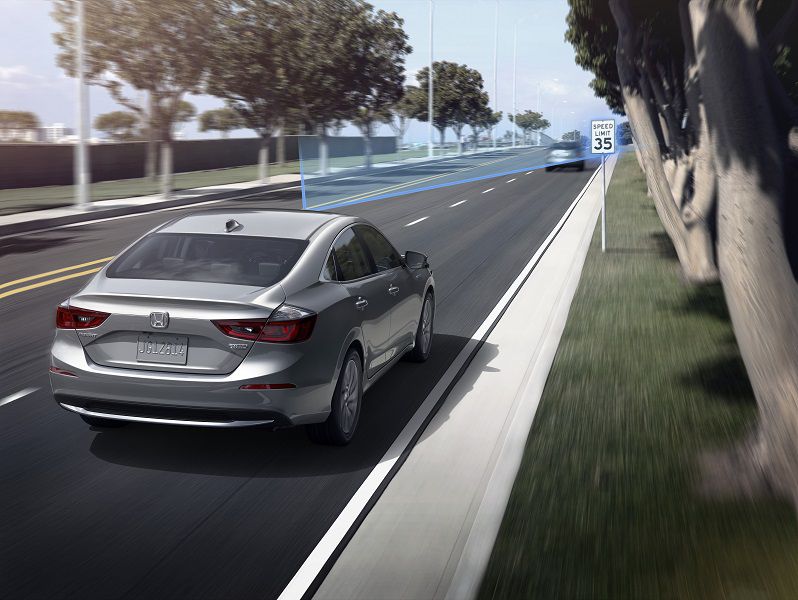
Photo by Honda
Driver Alertness Warnings
Most ADAS features focus on the vehicle, but many newer vehicles are now watching the driver as well. Research has determined that a distracted or fatigued driver shows signs in their control of the vehicle before a dangerous situation develops. Wandering within the lane and relaxing throttle control are examples, but a new vehicle can detect many signs of inattention.
At this point, such systems usually just sound a chime and encourage the driver to stop and rest, but some systems such as Cadillac’s Super Cruise require the driver to maintain alertness by keeping an interior camera trained towards the driver. If he or she looks away from the road for more than very few seconds, the system will sound an alarm and cease its automatic steering function. This technology is likely to become more common, as human inattention is a primary cause of collisions.
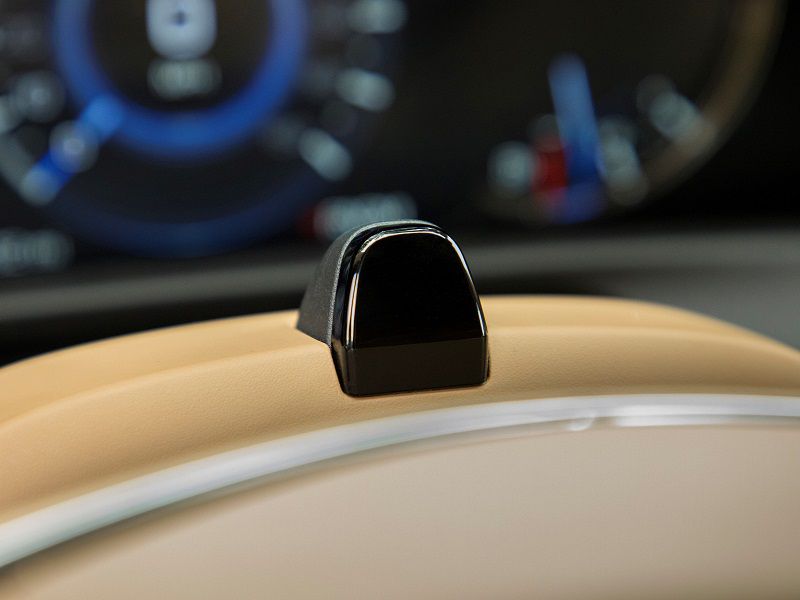
Photo by Cadillac